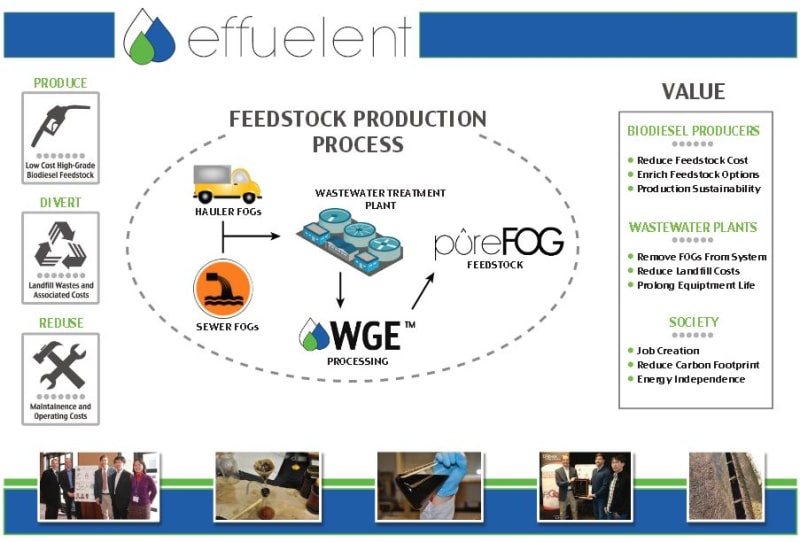Trap grease is a mixture of water, solids, fat, oil and grease (FOG) that accumulate in grease traps/interceptors and sewer pipes. The FOG content in the trap grease is the major cause of the clogging and corrosion of municipal sewer pipes. The annual generation of trap grease is significant and the maintenance costs are huge for flushing the blockage and fixing the leakage of pipelines caused by trap grease accumulation. The current trap grease management practices are costly and ineffective, which leaves burdens on environmental, social and economical welfare for the society. Trap grease converges in the wastewater treatment plant (WWTP) and the buoyant trap grease-containing layer is scooped off, transferred to drying tank and finally sent to landfill. The treatment and disposal of trap grease in the WWTP add cost to the operation and maintenance of the plant. Nonetheless, the FOG from trap grease can be processed into a low cost feedstock for biodiesel production. Biodiesel is a mixture of different fatty acid alky esters made from various oil sources, which reduces most of the air pollutant emissions when burnt as compared with petroleum diesel. One issue baffling the biodiesel industry, however, is the shortage of low price feedstock, which makes the biodiesel less competitive in the fuel market. With feedstock oil derived from trap grease, the production cost of biodiesel can be significantly lowered and the sustainability of biodiesel production can be improved by eliminating the use of oil from crops, such as soybean, which consumes large amount of resources. Additionally, this management approach also saves the treatment and disposal costs for WWTP.
It is extremely hard to extract FOG from trap grease by existing methods considering its heterogeneous composition. Solvent extraction by organic solvents, such as hexane, is feasible in lab-scale researches however its scalability remains unproved. Our team (“Effuelent”) proposed an innovative “non-solvent” extraction approach to separate FOG from the trap grease. Waste cooking oil was used to dissolve the FOG in the trap grease and an optimal condition of the operational parameters, namely, waste cooking oil-to-trap grease ratio (v/wt), temperature and extraction time were determined. Under 3.5:1 ratio and 60 °C, over 90% of the FOG in the trap grease could be extracted in 2 hours. After extraction, the FOG was refined to meet the specifications for biodiesel production (the final product is hence named “PureFOG”). The technology is ready for scaling-up and easy to be deployed in any WWTP. Based on this proven technology, a screening-level case study was performed for a local WWTP to investigate the “PureFOG” production and cost saving potentials. The results showed that for a 192 MGD WWTP, the potential “PureFOG” production capacity would be 1.98 million gallons per year and the production cost was around $0.4 per gallon, significantly lower than that of other feedstock oils, such as soybean oil. Additionally, it was also estimated that cost saving in treatment and disposal of trap grease could be up to $321,434 every year.
Like this entry?
-
About the Entrant
- Name:Qingshi Tu
- Type of entry:teamTeam members:Qingshi Tu
Ethan Jacobs
Ronald Gillespie - Patent status:pending

